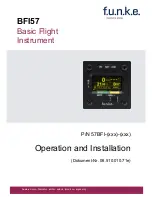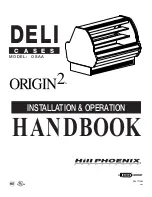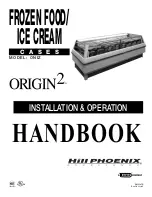
Mark V and Mark VII EGPWS Pilot’s Guide
060-4241-000
Smart Runway
®
Rev H, August 2011
95
“Flap Monitor INOP”
Take-off Flap Configuration Monitor is enabled but the
function is inoperative. Annunciated on ground during
Level 1 Self-Test.
RAAS status can also be displayed on the Terrain
Display. This is active only when the aircraft is on the
ground. If the INOP, Inhibit or Not available conditions
exist, the status is immediately shown on the Terrain
display and can be cleared by a range change. For all
other status messages, the procedure requires the flight
crew to select the terrain display followed by a change
in the displayed range (to a higher or lower range).
RAAS status is annunciated for two sweeps of the
Terrain Display. This feature is available on all aircraft,
but is primarily intended for those aircraft where the
flight crew does not perform an EGPWS self-test. The
displayed status messages are as follows.
RAAS Status Display Messages
Displayed Message
Conditions
RAAS OK FT
(green)
RAAS software enabled, functioning, has good position
information, and is at a validated airport. Distances
annunciated in feet.
RAAS OK M
(green)
RAAS software enabled, functioning, has good position
information, and is at a validated airport. Distances
annunciated in metres.
RAAS N/AVBL
(amber)
RAAS software enabled, but the system either has no
position information or the accuracy of the position
information is insufficient to allow RAAS to function.
RAAS NA X
(amber)
RAAS software enabled, but the location airport has
not been validated for RAAS in the EGPWS Terrain
Database. X = the location airport designator. For
example RAAS-NA-KSBP for San Luis Obispo Co.
Regional Airport. Added in -230-230 software version.
RAAS INH
(amber)
RAAS software enabled, but the advisories have been
inhibited with the activation of an external discrete.
RAAS RTO
(green)
RAAS software enabled and functioning, but RAAS has
detected a Rejected Take-Off condition. To clear this
message, the aircraft must be taxied off the runway
area.
RAAS INOP
(amber)
RAAS software enabled but function is inoperative.
Summary of Contents for EGPWS MK V
Page 1: ...FILE ONLY Release 08 Aug 2011 14 50 02 MST Printed on 01 Mar 2013 ...
Page 2: ......
Page 4: ......
Page 124: ...Mark V and Mark VII EGPWS Pilot s Guide 060 4241 000 118 Rev H August 2011 ...
Page 125: ......

































